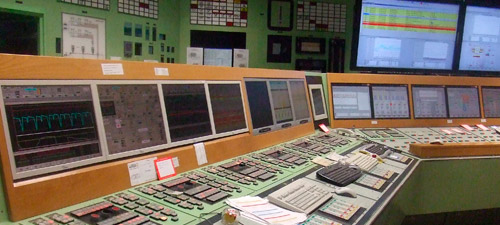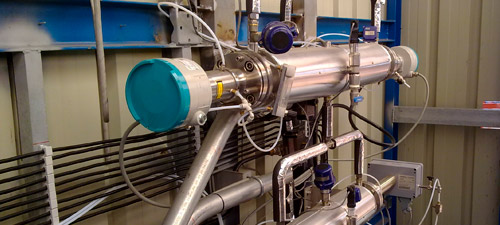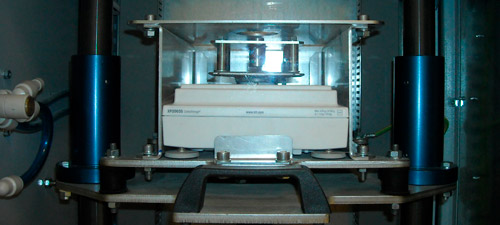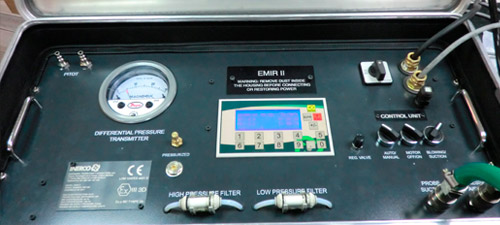Closed-loop Combustion Control (ABACO) |

Combustion Optimisation
Among the results obtained by applying INERCO's combustion optimisation technologies in thermal units, it can be remarked the achievement of heat rate improvements between 0.5% and 1.5%, along with simultaneous reductions in NOX emissions in the range of 15%-40%.


In-furnace Gas Monitoring (ABACO-Opticom) |

Carbon-in-ash Control (ABACO-LOI) |

Balancing of Coal Supply to Burners (ABACO-Coal) |

Control of Coal Flow Rate and Particle Size Distribution (ABACO-PCSampler) |

Gas Monitoring in Rotary Kilns (ABACO-Pirocom) |
Global combustion process optimisation in industrial boilers and furnaces:
o Combustion process balancing.
o Efficiency improvement.
o Carbon-in-ash minimisation.
o Reduction of environmental emissions (NOx, CO2, CO, SOx, particulates, etc.).
o Use of new fuel blends.
o Limitation of operational problems (slagging, fouling, corrosion).
Integration of advanced technologies for closed-loop control of local combustion conditions:
o Combustion monitoring systems.
o New regulation elements.
o Advanced combustion control based on Expert Systems.
Improvements in thermal unit heat rate (0.5%-1.5%).
Simultaneous NOx reductions in the range of 15%-40%
Control on operational issues (carbon-in-ash, CO production).
Efficient use of lower quality or lower priced fuels.
Combustion optimisation system based on the accurate monitoring of the combustion process.
Automatic measurement and control of in-furnace local gas concentrations in industrial boilers and furnaces (O2, CO, NOx, CO2, SO2).
Identification of key settings and parameters to optimise emissions and heat transfer through combustion tuning (distribution of fuel and air, excess O2, etc.).
Prevention of detrimental operating conditions in boiler walls.
Actual results based on information taken directly from selected in-furnace points.
Actual concentration profiles (no averaged values, no interpolation software).
Simultaneous improvement in heat range in a range of 0.5%-1.0%.
Typical NOx emissions reduction in a range of 15%-30%, exclusively through combustion tuning.
Improvements in carbon-in-ash and CO emissions.
Corrosion and slagging control.
Technology for the automated sampling of fly-ash and the on-line measurement of carbon-in-ash based on Loss On Ignition (LOI) determination.
Reproduction of reference laboratory techniques used for the measurement of unburned matter in the fly-ash generated in thermal combustion units.
Additional application for the on-line characterisation of parameters such as volatile matter or total moisture in pulverised coal sample.
Assured and proven reliability.
Unique monitor in the current market in which the measurement methodology is the reference technique used in the laboratory.
High precision.
No drift in the measurements or need of calibration.
Unaffected by variations in the physical-chemical properties of coal or fly ash properties.
Unaffected by interfering elements: hydroxides, carbonates, ammonium compounds, etc.
Cost-effective solution involving different samplers with a single analyser (multiplexing).
No obstructions during fly–ash transport.
Advanced wear resistant dampers for tuning coal flow rates to burners.
Regulating damper conceived and designed for high durability, maximum reliability and safe process operation.
Typical imbalance reductions from values higher than ±30% to levels below ±5%.
High regulation capability, typically ±30% of nominal flow rate.
Easy automation from Control Room.
Wear and abrasion resistance guaranteed through the use of anti-wear materials.
Intrinsically safe design with mechanical protections to avoid duct section blockages.
Design based and validated by fluid dynamics simulations.
Easy maintenance and component replacement.
Optional verification of ATEX Directive, if required.
Control of Coal Flow Rate and Particle Size Distribution (ABACO-PCSampler).
Optional homogenisation of pulverised solid samples.
Representative characterisation of pulverised coal from ducts to burners.
Rotary isokinetic sampling of pulverised coal according to ISO 9931 Standard.
Enables the tuning of imbalances found in the coal supplied to each individual burner.
Just one non-specialised operator needed to obtain an accurate measurement.
Monitoring of the probe movement.
Automatic adjustment of isokinetic conditions.
Control over sampling time.
Adaptability to duct conditions.
High repeatability and reliability of measurements.
Assistance software for sampling.
Minimal training required for operation.
Direct and continuous characterisation of flue gases (O2, NOx, CO, CO2, SO2) at the exit of rotary kilns, such as those found in cement factories.


